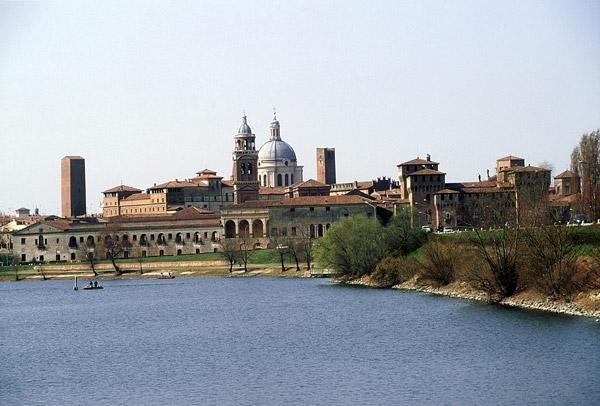Mantua is an accidental discovery. In summer, it suddenly rises from the fertile expanse of the Padana Plains in a triumph of towers and churches, golden red against the deep blue of the three lakes which border it. In winter, it is cocooned in a pale mist, which thins in the inner streets to reveal the slim arches of the Palazzo Ducale, the grandiose dome of the Basilica Sant’Andrea, and the unabashed hedonism of Palazzo Te, once the playground of the powerful, sly Duke Federico II Gonzaga.
If any other country in the world had a city like this, it would be signposted from hundreds of miles away. But in the land of Rome, Florence and Venice, Mantua’s location on the very outskirts of the main tourist trail—easily accessible from Milan, Verona and Bologna yet close to none—coupled with the reserved nature of its people, have ensured it is little known outside the circles of Renaissance buffs.
Now, however, all this is set to change after the Unesco World Heritage committee inscribed the city, together with nearby Sabbioneta, in the World Heritage List last week.
Mantua and Sabbioneta have been chosen because “both offer exceptional testimonies to the urban, architectural and artistic realizations of the Renaissance, linked through the visions and actions of the ruling Gonzaga family.”
While Mantua’s eclectic architecture shows the history and organic growth of a city from Roman times to the sober elegance of the Renaissance and the Baroque grandeur of later years, Sabbioneta’s perfect harmony is its natural counterpoint, the fruit of a single period and a single man’s vision. With its functional layout and clean lines sheltered by thick defensive walls, it is a little Athens, the embodiment of the Renaissance’s ideal city as envisaged by Vespasiano Gonzaga Colonna, the town’s first and last Duke.
Together, “the two towns are important for the value of their architecture and for their prominent role in the dissemination of Renaissance culture,” making them worthy of the World Site title.
The Unesco committee, which named 27 new sites from around the globe in last week’s session, also chose to include the Rhaetian Railway, which runs high across the Central Alps of Italy and Switzerland. An engineering masterpiece of viaducts, galleries and tunnels, it was added to the list because it is “exemplary of the use of the railway to overcome the isolation of settlements early in the 20th century, with a major and lasting socio-economic impact on life in the mountains.” But it also helps that it is one of Europe’s most scenic railways, winding its way along steep gorges and lush valleys, soft clouds and azure waters.
These latest inscriptions bring Italy’s World Heritage Sites to 43, out of a total 878. It is the country with the greatest number of sites, followed by Spain with 40 and China with 37.








